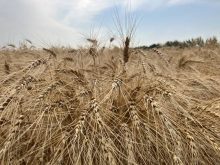Western Canadian feeder cattle prices were steady to $3 per hundredweight (cwt) higher with stronger buying interest noted on 800-pound-plus weight categories.
Feedlot operators were once again out in full force, shopping for any available animal that might put some weight on over the next few months. Order buyers were busy on the phone but quiet in the ring, with many auction markets finished for the season or selling minimal numbers.
U.S. feeder cattle prices continue to surge, causing a panic among major operators that these prices south of the border may be the market in southern Alberta next fall. The U.S. Department of Agriculture reported feeder cattle selling $3-$5/cwt higher on average, with heavier-weight replacements up to $10/cwt higher.
Read Also

Bring focused approach to target systems, not producers says animal activist
Darren Vanstone explains the process of reframing animal agriculture through advocacy and activism at the Human Canada One Health One Welfare Conference.
Smaller packages were noted at most sales this last week, with quality larger groups reflecting a premium of $5-$8/cwt. Replacements over 800 lbs. continue to gain on the lighter-weight categories. Exotic-based larger-frame steers weighing just under 800 lbs. were quoted at $197/cwt landed in a southern Alberta feedlot. Simmental-cross steers averaging 682 lbs. sold for $213/cwt in central Alberta.
The barley market appears to be on fire in the short term, with feedlots short bought for their nearby requirements. Small volumes of barley were trading in the range of $218-$225 per tonne landed in southern Alberta. Barley supplies in the major feeding regions have been drained and tight truck availability, road bans and spring seeding continue to drive feed grain prices higher. However, feeder cattle have divorced from the inverse barley/cattle price relationship in the short term. Alberta packers were buying fed cattle in the range of $149/cwt and feeding margins have room for stronger feeder cattle and barley prices.
On the macro level, rising grocery bills and higher gas prices have caused consumer confidence to stall after sharp increases earlier in the year. The latest monthly data show “at home” and “away from home” food spending are actually down from year-ago levels, which may be a signal that the rise in beef prices has outpaced the increase in disposable income.
— Jerry Klassen is a commodity market analyst in Winnipeg and maintains an interest in the family feedlot in southern Alberta. He writes an in-depth biweekly commentary, Canadian Feedlot and Cattle Market Analysis, for feedlot operators in Canada. He can be reached by email at [email protected] for questions or comments.














